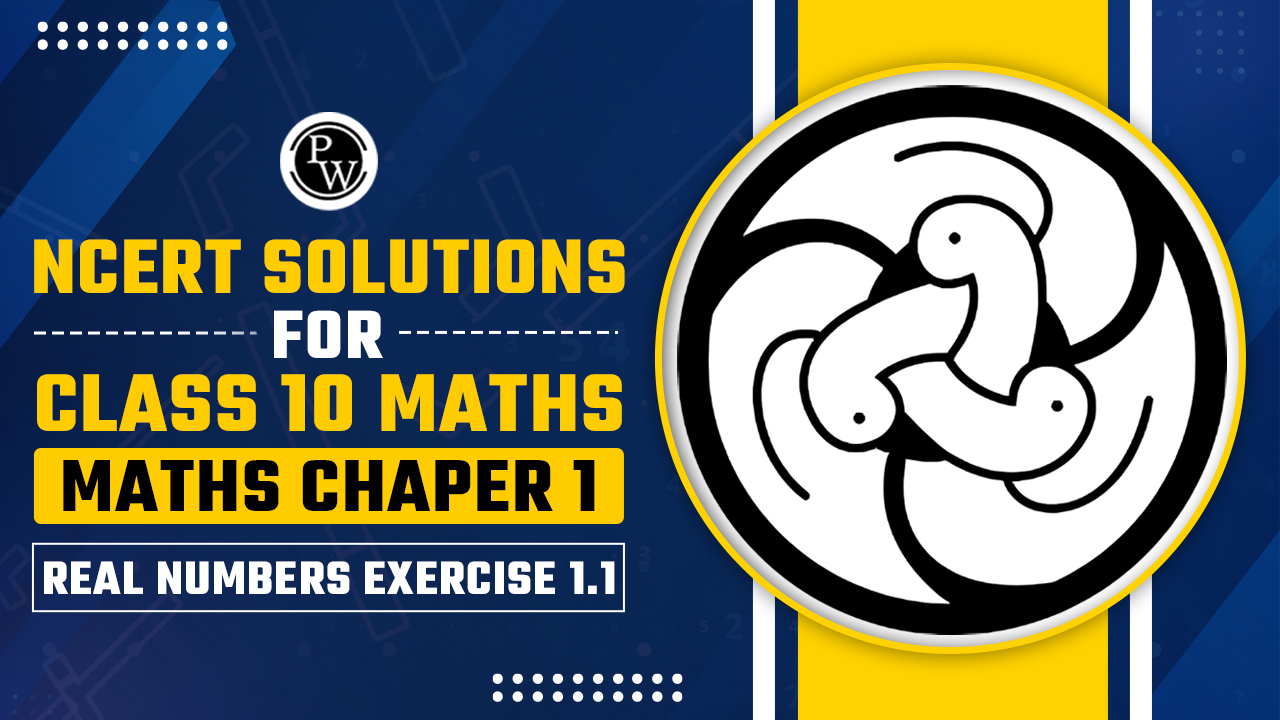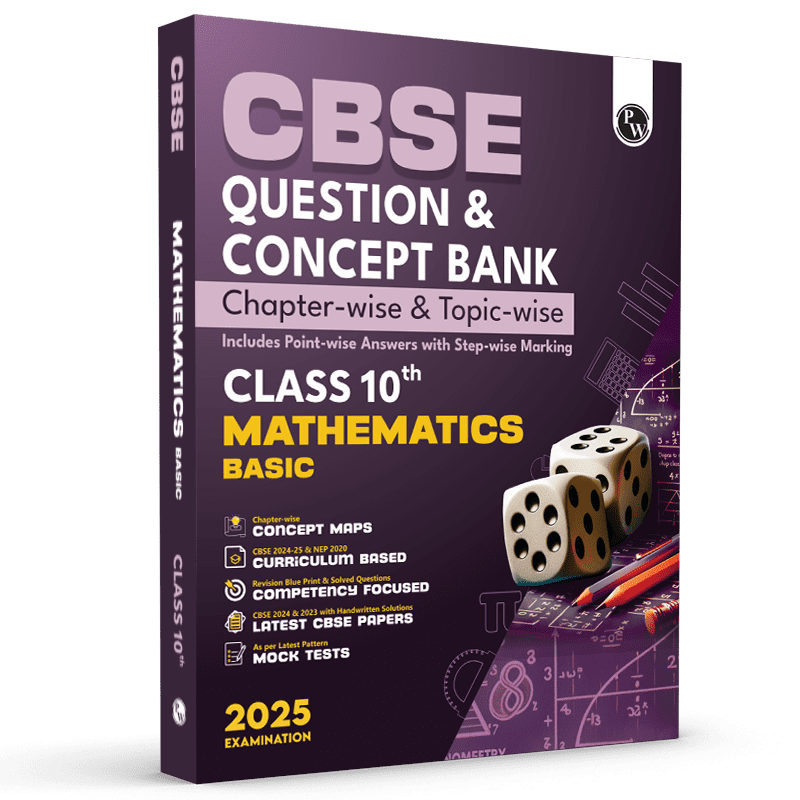NCERT Solutions for Class 10 Maths Chapters 1 Real Number Exercise 1.1

Class 10 Maths Chapters 1 Real Number Exercise 1.1:- Class 10 Maths Chapter 1, "Real Numbers," starts with Exercise 1.1, which introduces the fundamental concepts of real numbers. This exercise helps you explore the different types of real numbers, including natural numbers, whole numbers, integers, rational numbers, and irrational numbers. By working through this exercise, you'll get a solid understanding of how these numbers fit into the number system and how they interact. It’s a great way to build a strong foundation for more complex topics in your maths syllabus.
Check out: CBSE Class 10th Books
NCERT Solutions for Class 10 Maths Chapters 1 Real Number Exercise 1.1
Check out the class 10 maths chapter 1 exercise 1.1 solutions here:-
1. Use Euclid’s division algorithm to find the HCF of:
(i) 135 and 225
(ii) 196 and 38220
(iii) 867 and 255
Answer:
(i) 135 and 225
Since 225 > 135, we apply the division lemma to 225 and 135 to obtain
225 = 135 × 1 + 90
Since remainder 90 ≠ 0, we apply the division lemma to 135 and 90 to obtain
135 = 90 × 1 + 45
We consider the new divisor 90 and new remainder 45, and apply the division lemma to obtain
90 = 2 × 45 + 0
Since the remainder is zero, the process stops.
Since the divisor at this stage is 45,
Therefore, the HCF of 135 and 225 is 45.
Read More: NCERT Solutions for Class 10 Maths Chapters 1 Real Number Exercise 1.2
(ii) 196 and 38220
Since 38220 > 196, we apply the division lemma to 38220 and 196 to obtain
38220 = 196 × 195 + 0
Since the remainder is zero, the process stops.
Since the divisor at this stage is 196,
Therefore, HCF of 196 and 38220 is 196.
(iii) 867 and 255
Since 867 > 255, we apply the division lemma to 867 and 255 to obtain
867 = 255 × 3 + 102
Since remainder 102 ≠ 0, we apply the division lemma to 255 and 102 to obtain
255 = 102 × 2 + 51
We consider the new divisor 102 and new remainder 51, and apply the division lemma to obtain
102 = 51 × 2 + 0
Since the remainder is zero, the process stops.
Since the divisor at this stage is 51, Therefore, HCF of 867 and 255 is 51.
Check out: CBSE Class 10th Previous Year Papers
2. Show that any positive odd integer is of the form 6q + 1, or 6q + 3, or 6q + 5, where q is some integer.
Answer:
Let a be a given integer.
On dividing a by 6 , we get q as the quotient and r as the remainder such that,
a = 6q + r, r = 0,1,2,3,4,5
when r =0
a = 6q,even no
where r = 1
a = 6q + 1, odd no
where r = 2
a = 6q + 2, even no
where r = 3
a=6q + 3,odd no
where r = 4
a = 6q + 4, even no
where r = 5
a = 6q + 5, odd no
where r = 6
Therefore, 6q + 1, 6q + 3, 6q + 5 are not exactly divisible by 2. Hence, these expressions of numbers are odd numbers.
And therefore, any odd integer can be expressed in the form 6q + 1, or 6q + 3,or 6q + 5
3. An army contingent of 616 members is to march behind an army band of 32 members in a parade. The two groups are to march in the same number of columns. What is the maximum number of columns in which they can march?
Answer:
For the above problem, the maximum number of coulmns would be the HCF of 616 and 32
We can find the HCF of 616 and 32 by using Euclid Division algorithm.
Therefore
616 = 19 x 32 + 8
32 = 4 x 8 + 0
8 = 8 x 1 + 0
Therefore HCF (616, 32) = HCF of (32, 8) = 8
Therefore the maximum number of columns in which they can march is 8.
Check out: CBSE Class 10th Question Banks
4. Use Euclid’s division lemma to show that the square of any positive integer is either of form 3m or 3m + 1 for some integer m. [Hint: Let x be any positive integer then it is of the form 3q, 3q + 1 or 3q + 2. Now square each of these and show that they can be rewritten in the form 3m or 3m + 1.
Answer:
If a and b are two positive integers, then,
Therefore, r = 0, 1, 2
Therefore, a = 3q or a = 3q + 1 or a = 3q + 2
Therefore, the square of any positive integer is either of the form 3m or 3m + 1.
5. Use Euclid’s division lemma to show that the cube of any positive integer is of the form 9m, 9m + 1 or 9m + 8.
Answer:
Let a be any positive integer and b = 3
a = 3q + r, where q ≥ 0 and 0 ≤ r < 3
Therefore, every number can be represented as these three forms. There are three cases.
Case 1: When a = 3q,
Where m is an integer such that m = (3q)3
Case 2: When a = 3q + 1,
Case 3: When a = 3q + 2,
Therefore, the cube of any positive integer is of the form 9m, 9m + 1, or 9m + 8.
Check out: CBSE Class 10th Sample Papers
Class 10 Maths Chapter 1 Exercise 1.1 Solutions Summary
-
Introduction to Real Numbers: Understanding the classification and properties of real numbers.
-
Euclidean Division Algorithm: Learning how to find the highest common factor (HCF) of two numbers using the Euclidean division algorithm.
-
Fundamental Theorem of Arithmetic: Grasping that every integer greater than 1 is either a prime number or can be uniquely factorized into prime numbers.
-
Problem-Solving: Applying the Euclidean division algorithm and the Fundamental Theorem of Arithmetic to solve various mathematical problems.
-
Foundation Building: Establishing a strong base for more advanced topics in mathematics by mastering these fundamental concepts.
Class 10 Chapter 1 Maths Real Number Exercise 1.1 FAQs
Q1. What is the Euclidean division algorithm?
Ans. It is a method for finding the highest common factor (HCF) of two integers by repeatedly dividing and taking remainders.
Q2. What is the Fundamental Theorem of Arithmetic?
Ans. This theorem states that every integer greater than 1 is either a prime number or can be uniquely factorized as a product of prime numbers.
Q3. How do you apply the Euclidean division algorithm?
Ans. Divide the larger number by the smaller number, then divide the divisor by the remainder, and repeat until the remainder is zero. The last non-zero remainder is the HCF.
Q4. What is the importance of prime factorization?
Ans. Prime factorization is crucial because it is used to simplify fractions, find HCF and LCM, and solve various mathematical problems.
Q5. Can the Euclidean algorithm be used for any pair of integers?
Ans. Yes, it can be used for any pair of positive integers to find their HCF.












